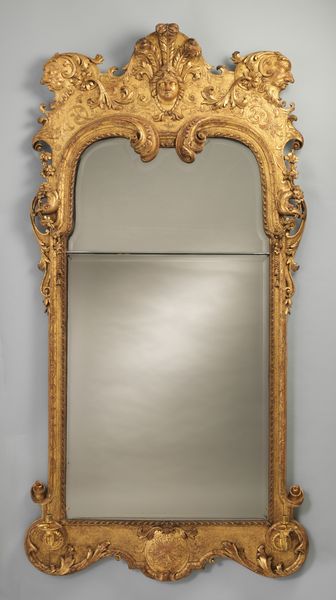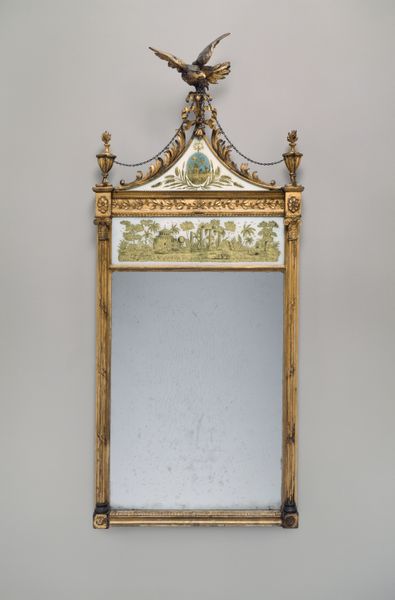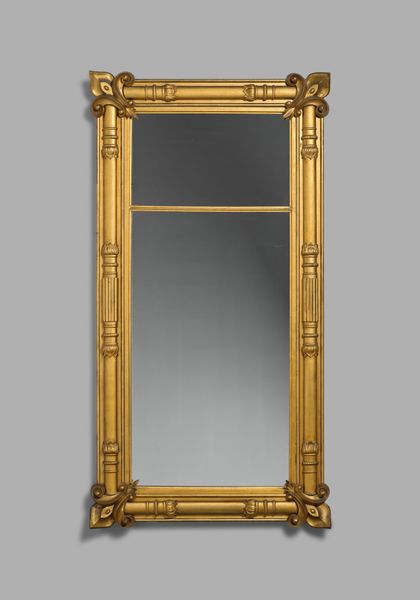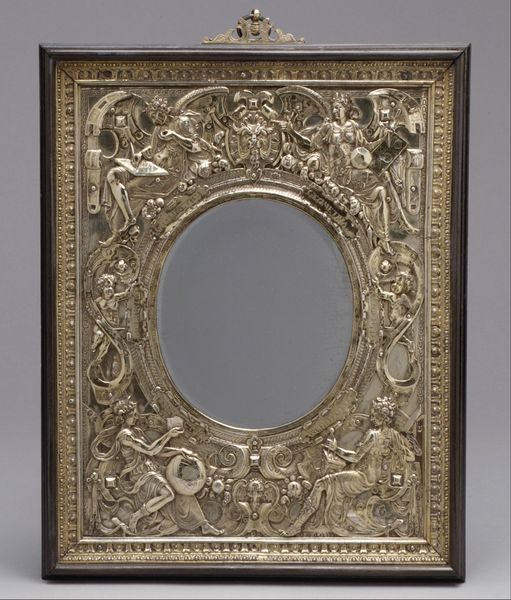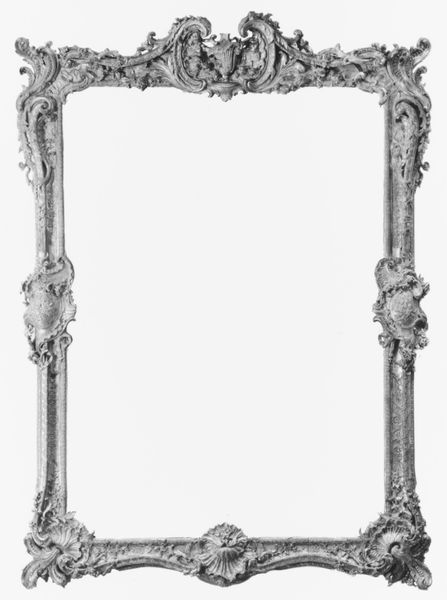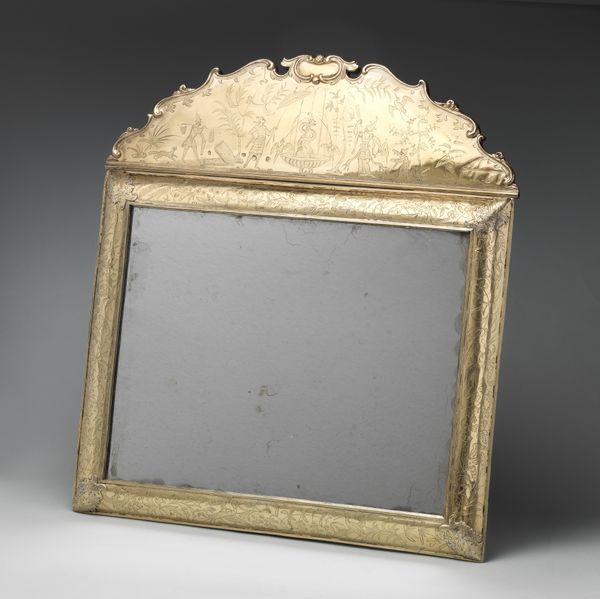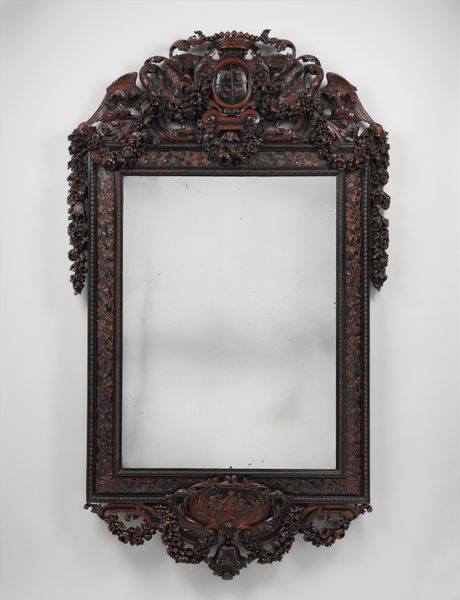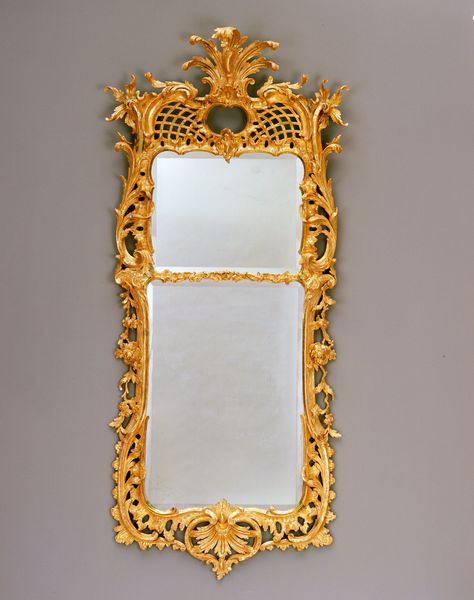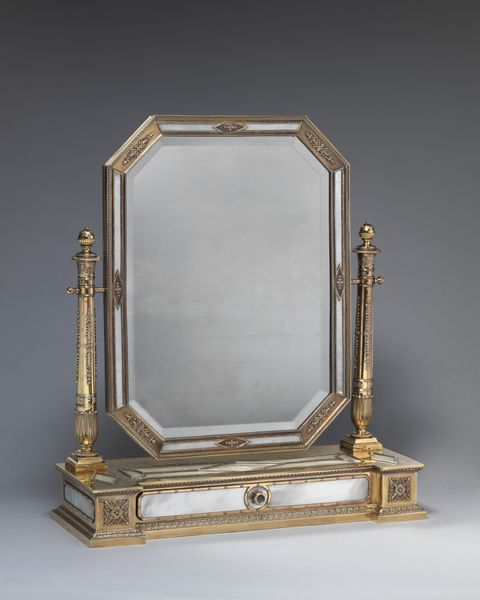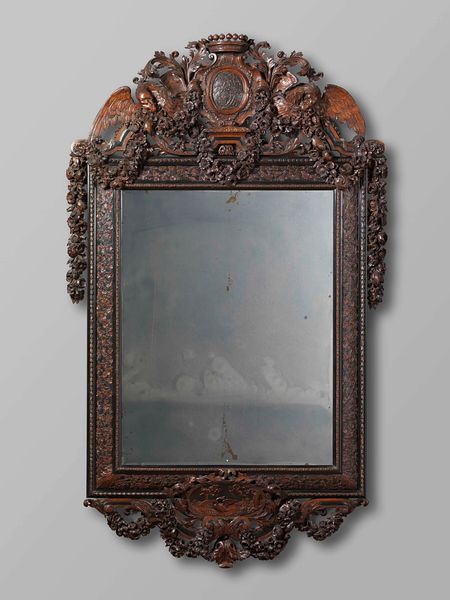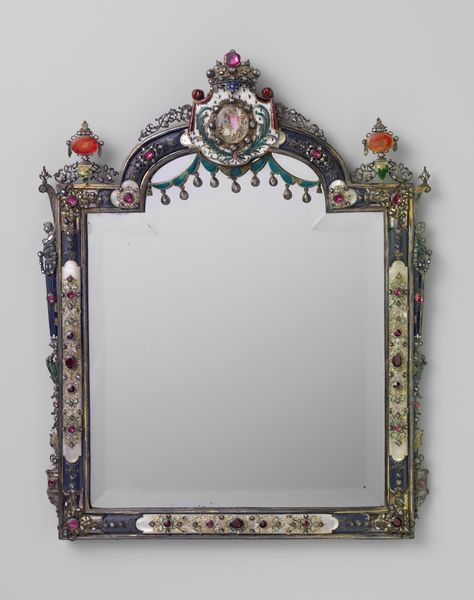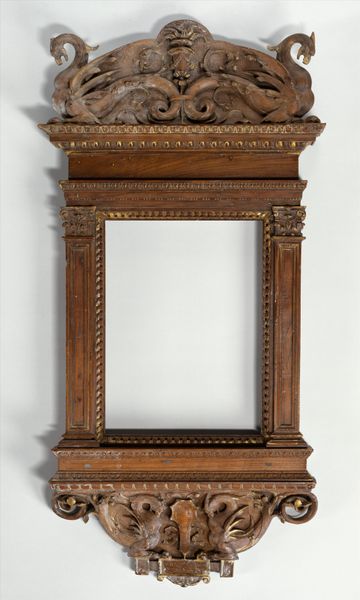
sculpture, wood
#
neoclacissism
#
stone
#
sculpture
#
sculpture
#
wood
#
decorative-art
Dimensions: 11 ft. 8 in. × 75 in. (355.6 × 190.5 cm) Cresting, confirmed: 22 in. (55.9 cm) pediment, confirmed: 12 3/8 in. (31.4 cm) hanging strap length: 25 3/16 in. (64 cm)
Copyright: Public Domain
Editor: This exquisitely detailed "Mirror from Croome Court, Worcestershire," crafted by Robert Adam around 1765, and currently housed in the Metropolitan Museum of Art, really strikes me with its neoclassical grandeur. What symbolic meaning do you find embedded within its sculpted form? Curator: This mirror speaks volumes, doesn’t it? Neoclassicism sought to revive the ideals of ancient Greece and Rome. Mirrors, of course, reflect. Beyond that, the ornamentation can be read through the lens of cultural memory. The festoons and urn, for example, speak of sacrifice and celebration. And what about those female busts on either side of the looking glass? What meaning do you extract from their stoic placement? Editor: Perhaps they represent classical ideals of beauty and wisdom, acting almost as guardians of reflection and self-knowledge? The material, I believe it's wood and stone? How did that influence the artistry? Curator: Exactly. The medium certainly matters. While we are talking about Robert Adams, there’s more beyond mere representation; wood lends a warmth and familiarity, while stone accents denote permanence. It invites a dialogue between past and present. The choice wasn't just about aesthetics. These materials inherently carry a wealth of meaning rooted in culture. Don’t you think? Editor: I hadn’t considered how deeply intertwined material choice is with symbolic representation! Curator: Think about the psychological impact on the Croome Court residents seeing themselves framed within such a wealth of signifiers daily! It encouraged not just self-regard but aligned them with a curated lineage of values. What do you take away after contemplating this decorative object more closely? Editor: I see now how much the piece communicates, how every detail serves as a deliberate echo of history and intention! Curator: Indeed. It prompts reflection on not only who we see but also on who we want to be.
Comments
No comments
Be the first to comment and join the conversation on the ultimate creative platform.
